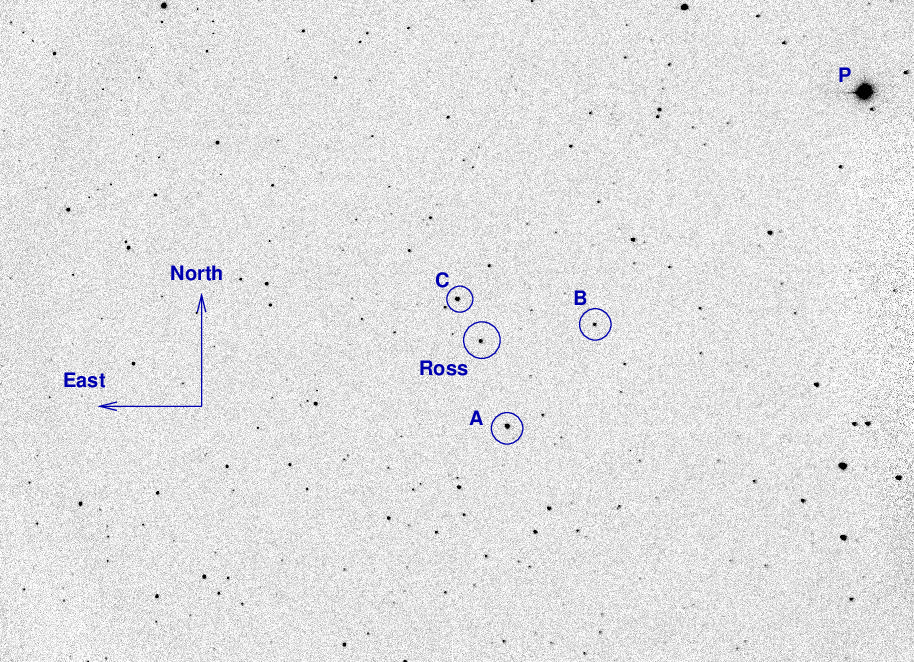
On the night of May 12/13, 2020, under good conditions, I acquired images for astrometry of two nearby stars. One was Ross 248 , and the other GX And ; the latter is actually a double star, with two components separated by about 35 arcsec moving together.
This is one of the stars that a capstone student may study over the next year in a project involving parallax. Ross 248 is a relatively faint red star surrounded by many other stars of similar brightness, so it's a good candidate for high-precision parallax measurements.
The main setup was:
Notes from the night:
No guiding or Remote Desktop tonight, as I had only a short time to make these measurements before dawn. The objects were low in the sky, around 30 degrees above the horizon, so the quality of the images isn't great.
The object is (currently) near position
RA = 23:41:55.27 Dec = +44:10:06.38 (J2000)
A chart of the field is shown below. The size of the chart is about 41 x 27 arcminutes. The noisy area at right (West) is the shadow of the guider's pickoff mirror.

I've marked the location of several comparison stars.
star UCAC4 B V r ------------------------------------------------------------------------- A UCAC4 671-120730 12.617 10.689 B UCAC4 671-120688 C UCAC4 671-120749 10.987 10.663 P kappa And 4.06 4.14 --------------------------------------------------------------------------
I took a photo of the finder TV's screen when pointing to Ross 248; this could be a useful reference for the future:
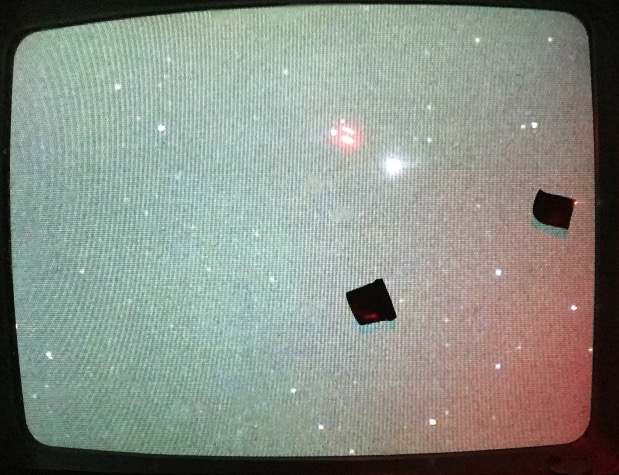
I ran the camera at -20 C. Nothing out of the ordinary.

I took a series of 20 exposures of the field, using the R-band filter and an exposure time of 20 seconds.
Using the same techniques as described for earlier nights, I matched detected stellar positions to the Gaia DR2 catalog; as usual, I used a linear model and included all stars in the catalog.
This is my first measurement of Ross 248, so there isn't very much to see so far. I'll provide more details after I've made measurements on different nights; it ought to be easy to see the high proper motion of the object.
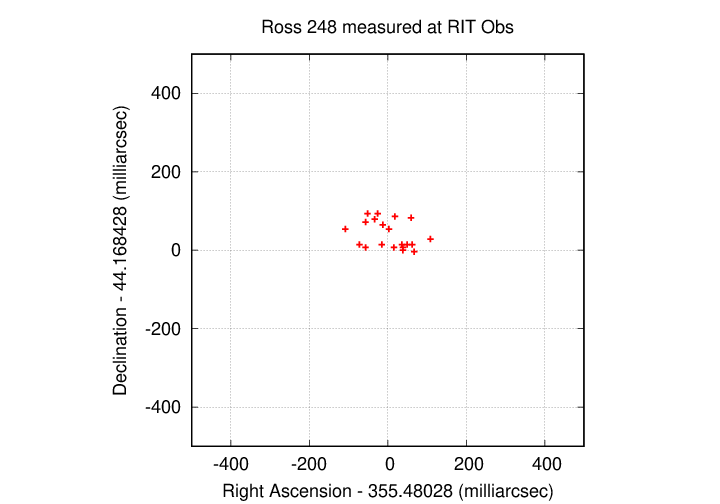
Like Ross 248, GX And is a nearby (binary) star which will be the target of a parallax project in the coming year. One of the two components is bright -- about mag V = 8 -- so one must use short exposures to prevent it from saturating the detector. That may mean that this system isn't as easy to measure as Ross 248 or some others.
The object is currently close to this position:
RA = 00:18:28.4 Dec = +44:01:31 (J2000)
but it does have a very high proper motion.
A chart of the field is shown below. The size of the chart is about 41 x 27 arcminutes. The noisy area at right (West) is the shadow of the guider's pickoff mirror.
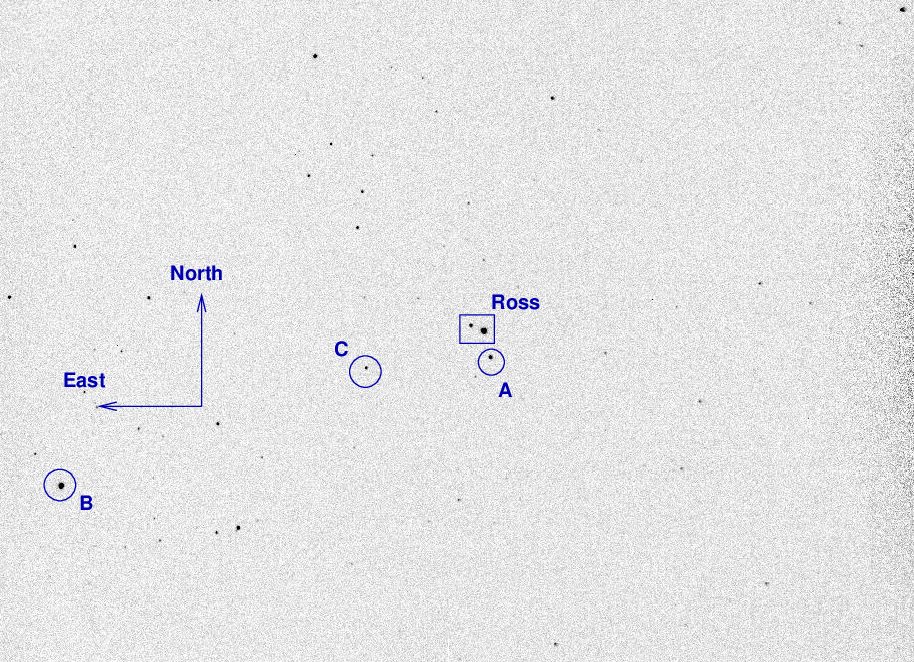
The two components of the GX And binary sit inside the box. I've marked the location of several comparison stars as well.
star UCAC4 B V r ----------------------------------------------------------- A 671-001473 9.939 9.790 B 670-001639 9.413 8.472 C 671-001509 12.712 11.421 11.001 -----------------------------------------------------------
I took a photo of the finder TV's screen when pointing to GX And; this could be a useful reference for the future:
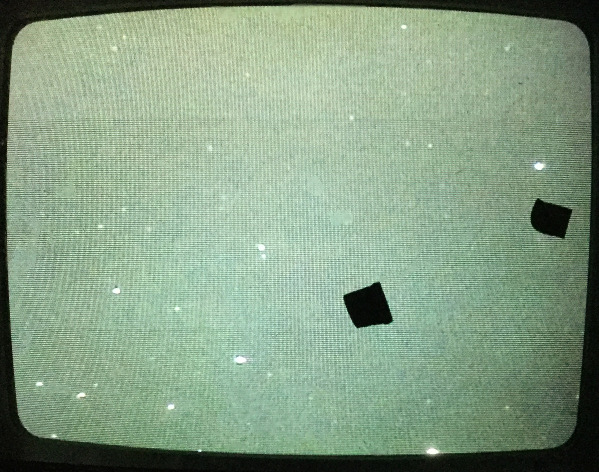
I took a series of 20 exposures of the field, using the R-band filter and an exposure time of only 5 seconds. The field was low, at an altitude of about 30 degrees.
Using the same techniques as described for earlier nights, I matched detected stellar positions to the Gaia DR2 catalog.
This is my first measurement of GX And, so there isn't very much to see so far. As you can see, the variation in position from one image to the next is very large: the scatter is around 38 milliarcsec in the RA direction. Ugh. I suspect that this is due partly to the low position in the sky, but also due to the relatively low signal-to-noise values in many of the comparison stars; the relatively small number of comparisons doesn't help, either.

Last modified 5/13/2020 by MWR.